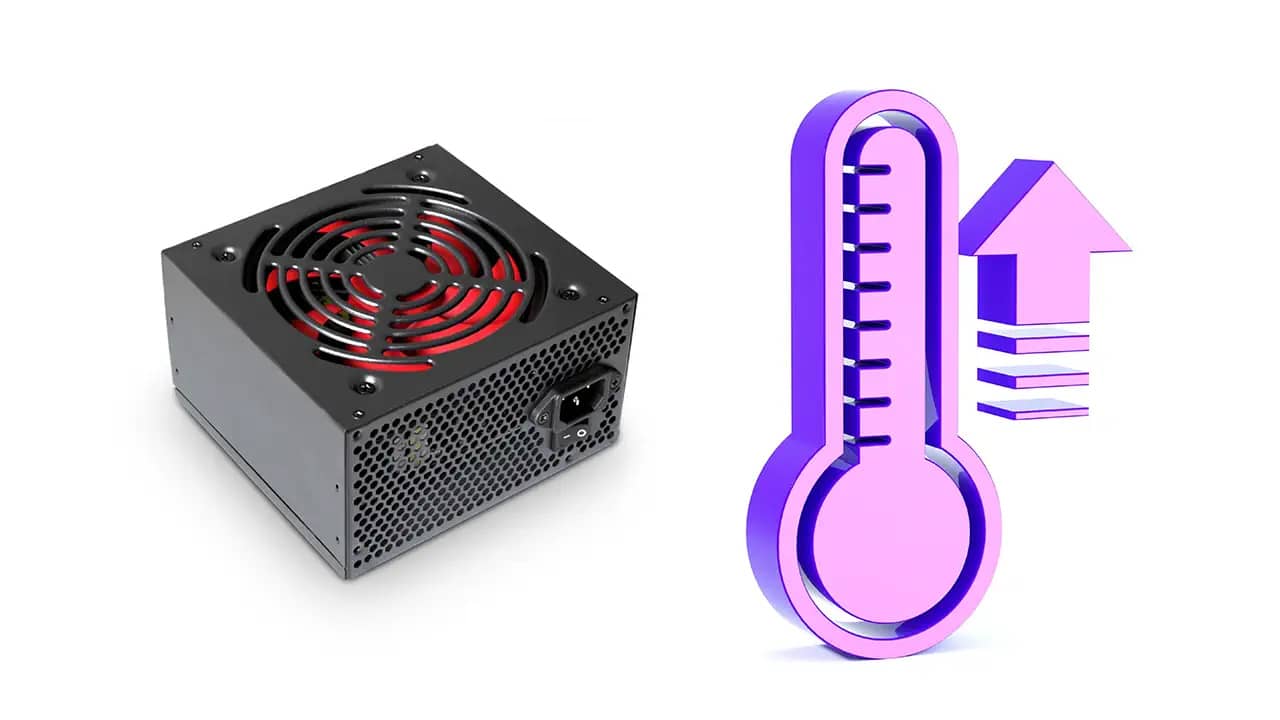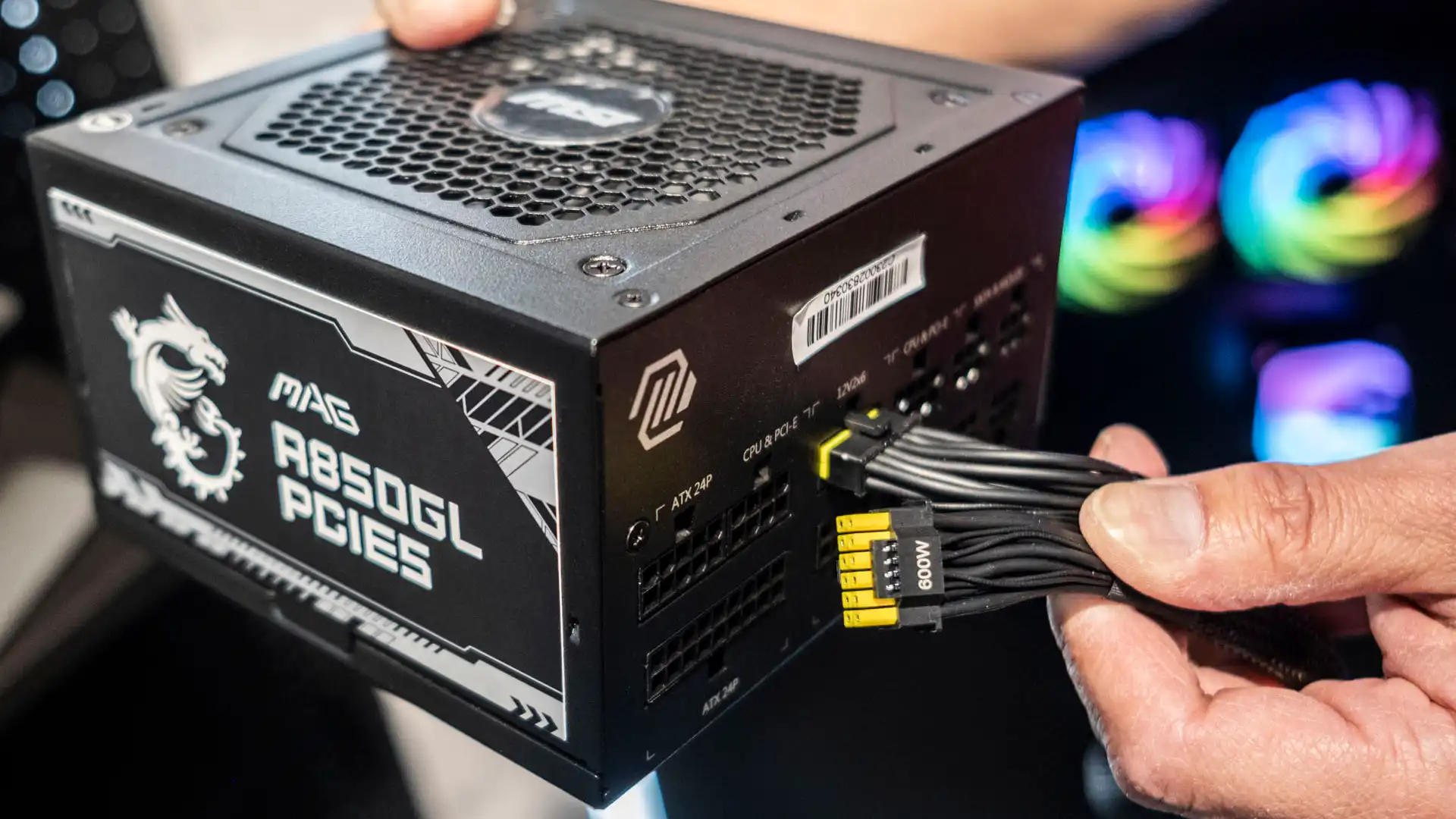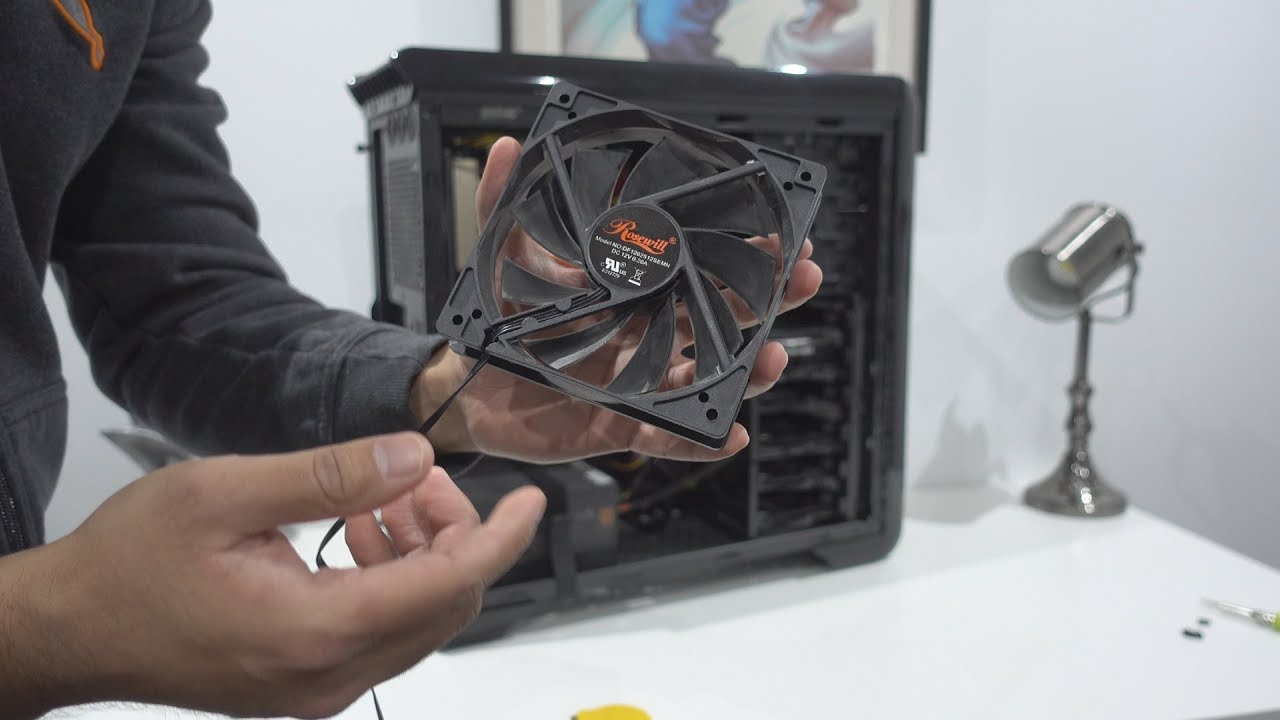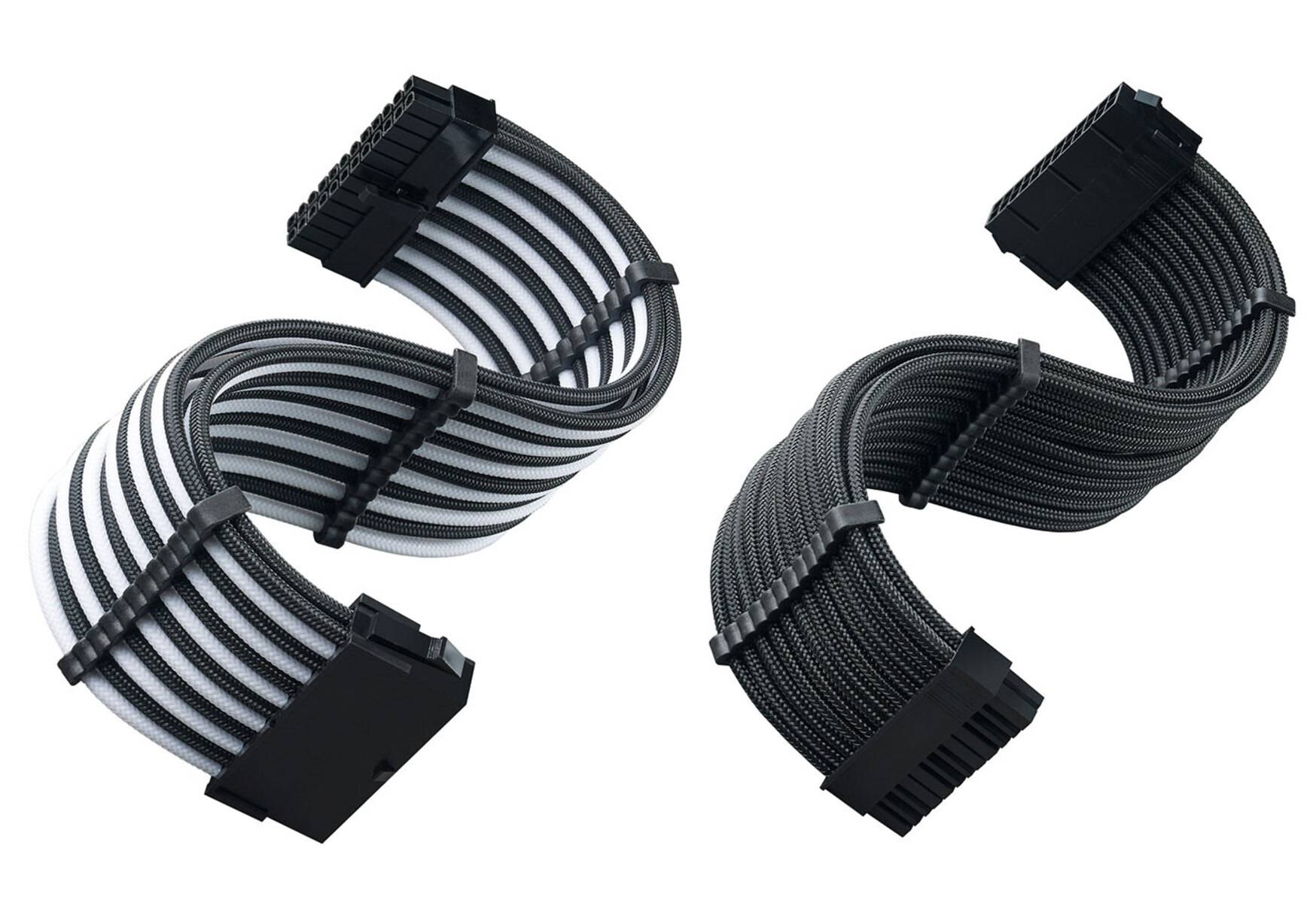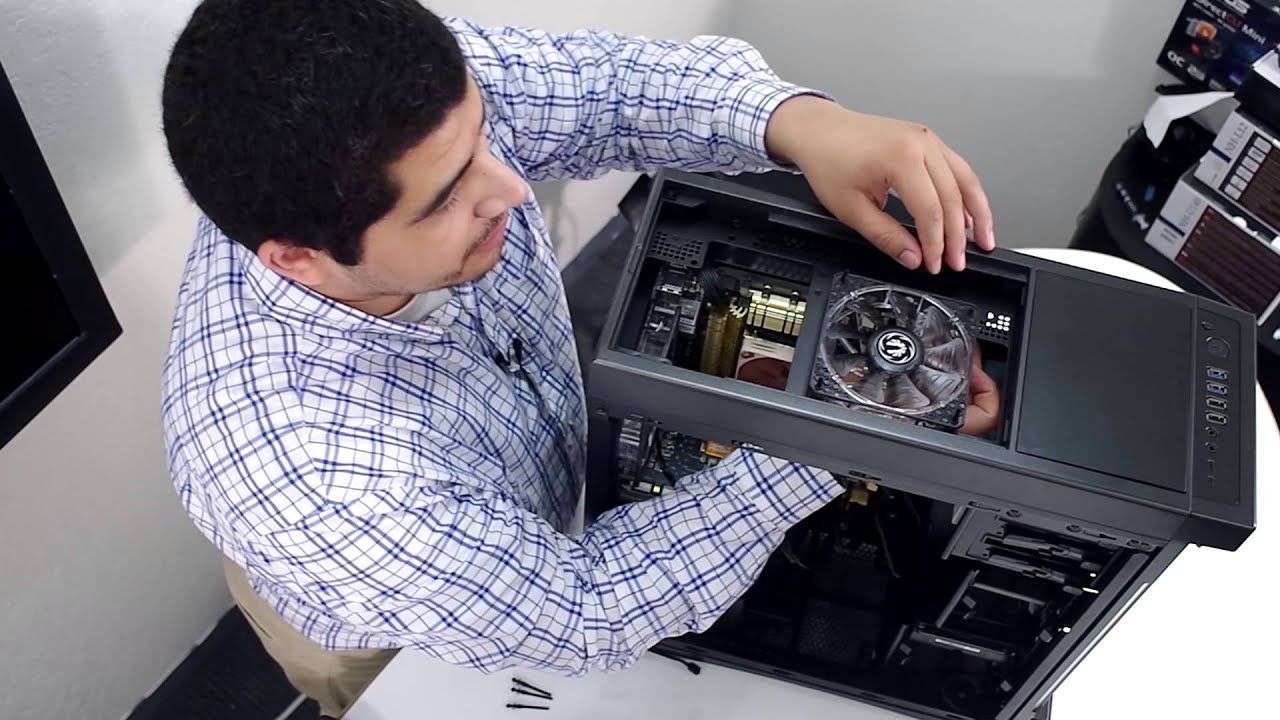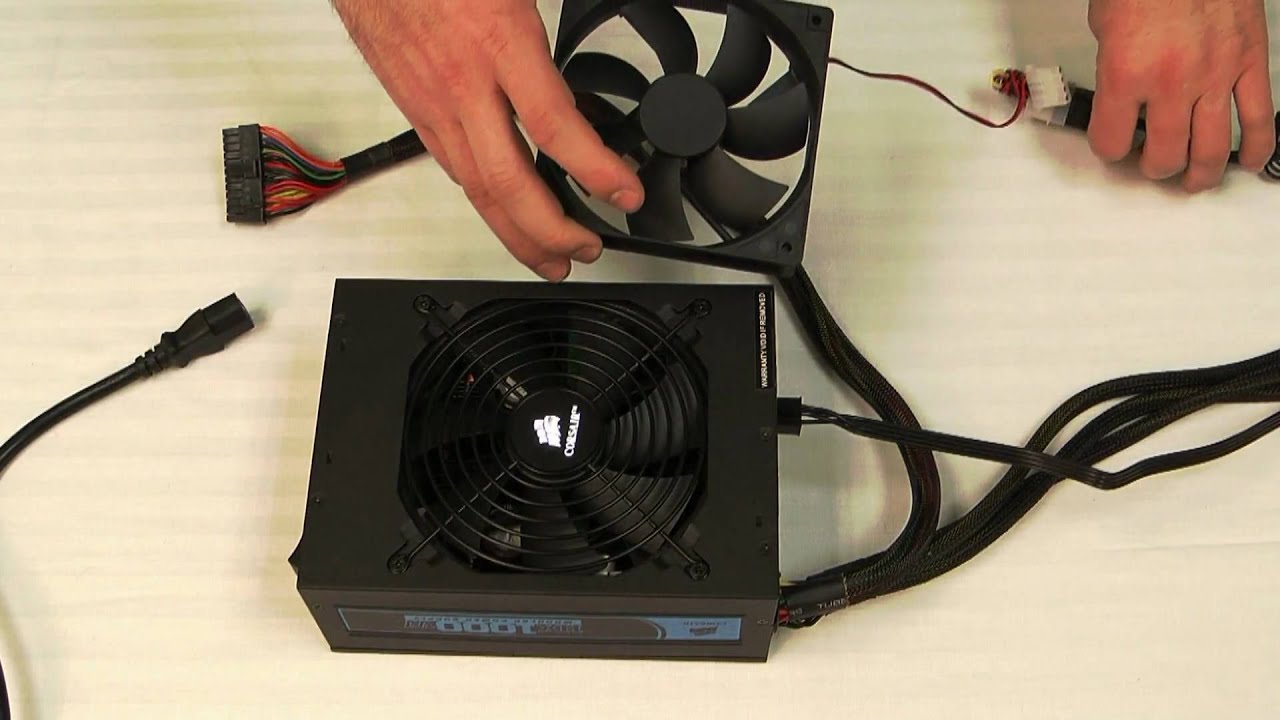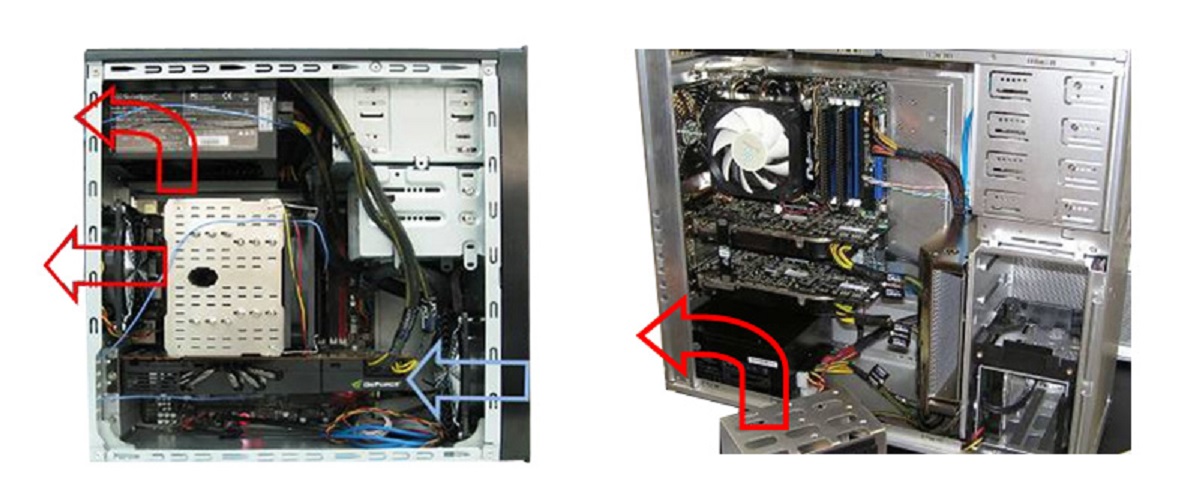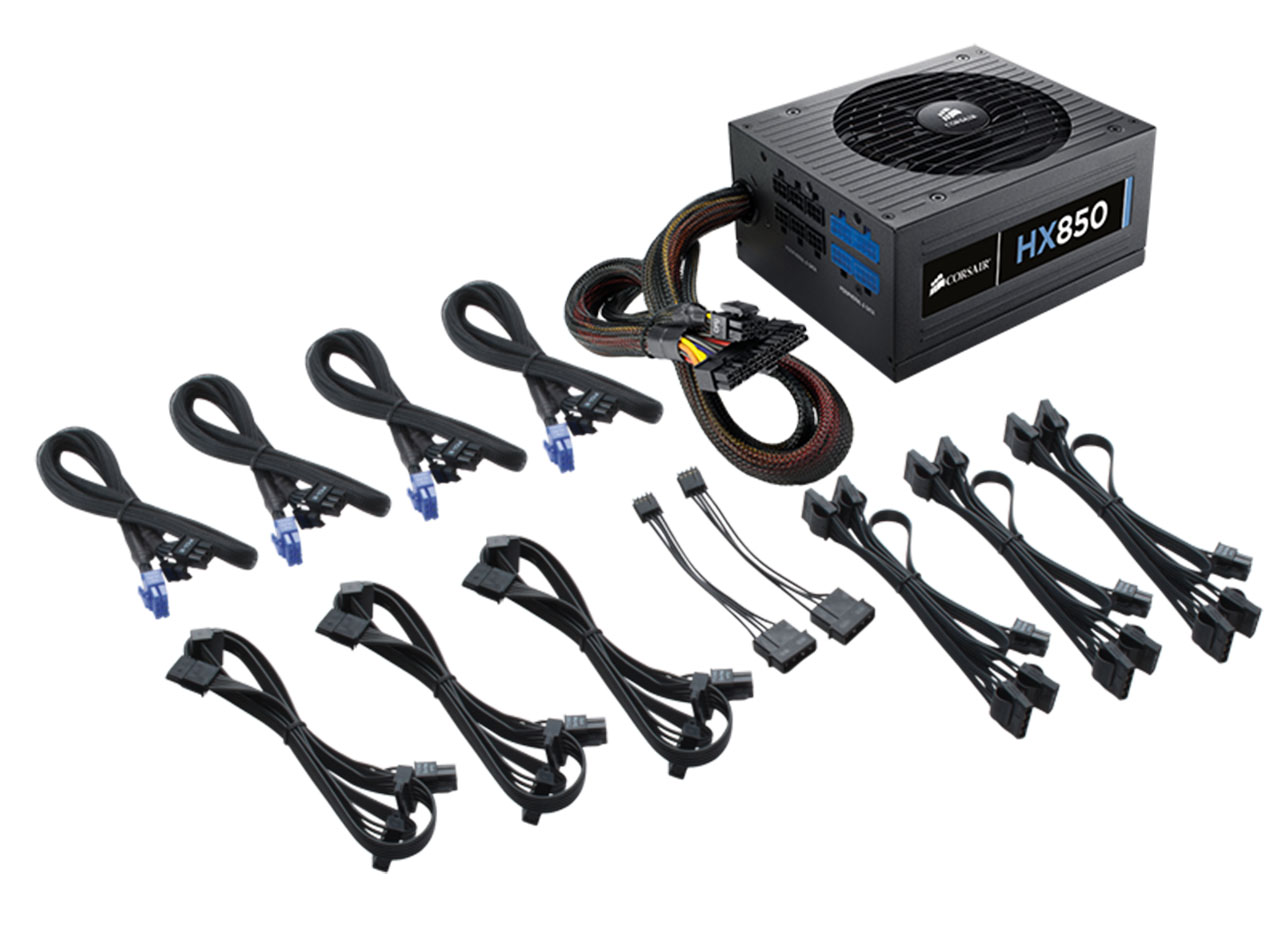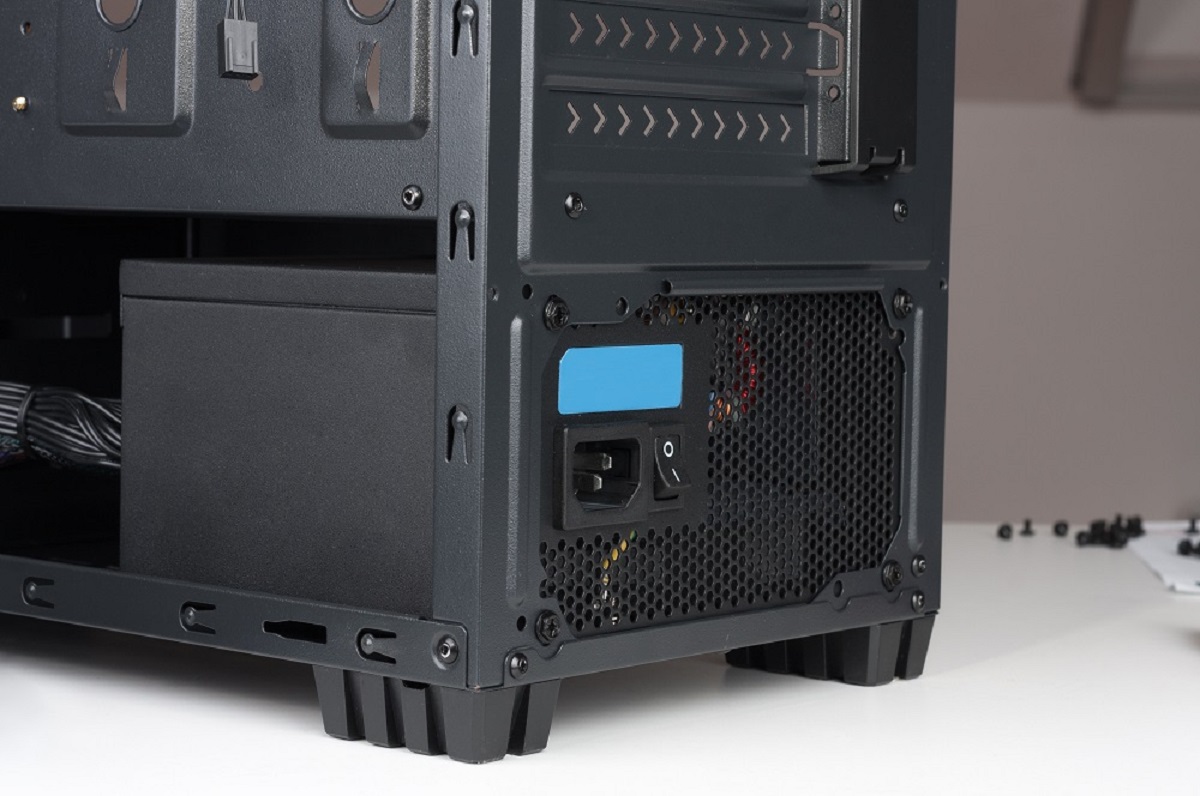Introduction
Welcome to our guide on understanding the temperature levels of a Power Supply Unit (PSU) and how it affects its performance. As a vital component of any computer system, the PSU is responsible for providing a steady and reliable power source to all hardware components. Just like any other electronic device, a PSU generates heat during operation, which can impact its overall efficiency and lifespan.
In this article, we will delve into the topic of PSU temperatures and explore the ideal operating range, factors that affect temperature levels, common temperature thresholds, and the importance of monitoring and managing PSU temperature. We will also discuss various cooling solutions that can help maintain optimal temperature levels for your PSU.
A PSU’s temperature is a critical factor to consider, as excessive heat can lead to various issues such as decreased performance, stability problems, and even potential hardware damage. Therefore, having a good understanding of PSU temperature levels and how to keep them in check is crucial for ensuring the longevity and reliability of your computer system.
What is a PSU?
A Power Supply Unit (PSU) is a hardware component that converts electrical energy from a power source, such as a wall outlet, into the appropriate voltage and current to power the various components of a computer system. It is responsible for delivering a stable and reliable power supply to the motherboard, CPU, graphics card, storage devices, and other peripherals.
PSUs come in various sizes and power ratings to accommodate different computer systems’ requirements. They are typically categorized based on their wattage, which denotes the maximum power output they can provide. Common wattage ratings range from 300W to 1000W and higher, depending on the system’s power demands.
In addition to delivering consistent power, PSUs also regulate voltage and protect components from voltage spikes, ensuring the smooth operation of the computer system. They serve as a vital link between the power source and the hardware, playing an integral role in the overall functionality and performance of the system.
PSUs are typically located in the computer case, either at the top or bottom, and they are connected to the motherboard and other components via cables. They feature various connectors specifically designed to match the needs of different hardware components, such as SATA connectors for storage drives, PCIe connectors for graphics cards, and ATX connectors for the motherboard.
Modern PSUs also incorporate safety features, such as over-voltage protection, under-voltage protection, and short-circuit protection, to safeguard the system and its components from potential damage. These safety mechanisms help maintain stable power delivery and prevent any electrical mishaps.
It’s important to carefully select a PSU that matches the power requirements of your computer system. Choosing an inadequate PSU may lead to power instability, system crashes, and even component failure. On the other hand, selecting an overpowered PSU can result in unnecessary energy consumption and increased heat generation.
Now that we have a basic understanding of what a PSU is and its role in a computer system, let’s explore the importance of temperature ratings for PSUs and how they impact performance and reliability.
Understanding Temperature Ratings
Temperature ratings are an essential aspect of Power Supply Units (PSUs) that help in determining the ideal operating conditions. The temperature rating refers to the range of temperatures within which the PSU can function reliably and efficiently. It indicates the maximum temperature that the PSU can withstand without causing any performance issues or potential damage. Understanding temperature ratings is crucial as it ensures the longevity and stability of the PSU and the overall system.
PSU temperature ratings are typically specified by the manufacturer and can vary depending on the model and quality of the PSU. The temperature ratings typically define the range of ambient temperatures within which the PSU can operate optimally. The most common temperature ratings include 0°C to 40°C, 0°C to 50°C, and 0°C to 60°C.
It’s important to note that the specified temperature ratings are for the surrounding environmental temperature and not the actual internal temperature of the PSU. During operation, PSUs generate heat internally, and the internal temperature can exceed the ambient temperature. However, the PSU’s internal components are designed to handle this heat within the specified temperature range.
Exceeding the recommended temperature range can have detrimental effects on the PSU. High temperatures can cause components to degrade faster, leading to reduced efficiency, decreased lifespan, and even potential hardware failures. On the other hand, operating the PSU in extremely low temperatures can impact its performance and may result in issues such as increased fan noise or unstable power delivery.
It’s essential to ensure that the ambient temperature around the PSU does not exceed the specified temperature ratings. Proper airflow within the computer case is crucial for maintaining a suitable temperature environment for the PSU. Adequate ventilation, efficient cooling systems, and the proper positioning of the PSU can all contribute to keeping the temperature within the recommended range.
Now that we have a clear understanding of temperature ratings and their significance in PSU operation, let’s explore the ideal operating temperature for a PSU and the factors that can affect its temperature levels.
The Ideal Operating Temperature
The ideal operating temperature for a Power Supply Unit (PSU) is within the range specified by the manufacturer. This range is typically mentioned in the PSU’s documentation or specifications and denotes the optimal temperature conditions for reliable and efficient functioning of the PSU.
While the specific ideal operating temperature can vary depending on the PSU model, the general rule of thumb is to keep the temperature within the range of 0°C to 50°C. Operating the PSU within this range ensures optimal performance, longevity, and stability. However, it is important to note that different PSU models may have different temperature range recommendations, so it’s always best to consult the manufacturer’s guidelines.
Operating a PSU at temperatures below the recommended range can lead to several issues. One common problem is the increase in fan noise as the PSU compensates for the lower temperature by ramping up the fan speed. Additionally, the PSU may struggle to maintain stable power delivery, which can cause system crashes or unexpected shutdowns.
Conversely, operating a PSU at temperatures above the recommended range poses even greater risks. Excessive heat can cause the PSU’s internal components to degrade faster, leading to decreased efficiency and potentially damaging the hardware. Higher temperatures can also lead to thermal throttling, where the PSU automatically reduces its power output to prevent overheating. This can result in decreased performance and instability in the system.
To maintain the ideal operating temperature for your PSU, ensuring proper airflow and ventilation within the computer case is crucial. Positioning the PSU in a way that promotes effective cooling can significantly contribute to maintaining optimal temperatures. Additionally, using quality fans or liquid cooling solutions can help dissipate heat efficiently.
Monitoring the PSU’s temperature regularly is also important to detect any abnormalities or spikes early on. This can be done through software utilities or hardware monitors that provide real-time temperature readings. Monitoring allows for timely action to be taken, such as adjusting fan speeds or cleaning out dust-clogged vents, to prevent temperature-related issues.
Understanding the ideal operating temperature and actively managing the PSU’s temperature levels can greatly improve the system’s overall performance, stability, and lifespan. In the next section, we will explore the various factors that can affect the temperature of a PSU.
Factors Affecting PSU Temperature
Several factors can influence the temperature of a Power Supply Unit (PSU). By understanding these factors, you can take proactive measures to manage and control the PSU’s temperature levels. Let’s explore some of the key factors that can affect PSU temperature:
1. Power Load: The power load placed on the PSU directly impacts its temperature. As the power demand increases, the PSU has to work harder, generating more heat in the process. High-powered components such as high-end graphics cards or overclocked CPUs can significantly increase the power load and, consequently, the PSU’s temperature.
2. Efficiency Rating: The efficiency of a PSU affects its heat generation. Higher efficiency PSUs tend to generate less heat compared to lower efficiency ones when delivering the same amount of power. Investing in a PSU with a higher efficiency rating can help reduce heat output and keep the temperature under control.
3. Airflow and Ventilation: Proper airflow within the computer case is crucial for maintaining a suitable temperature environment for the PSU. Inadequate ventilation, blocked air vents, or a cluttered case can result in poor airflow, leading to higher PSU temperatures. It is essential to ensure that the case has sufficient fans and that the PSU has enough space around it for proper ventilation.
4. Ambient Temperature: The ambient temperature of the environment where the computer system is located can affect the PSU’s temperature. Higher ambient temperatures can cause the PSU to run hotter, while lower ambient temperatures can result in cooler PSU operation. It is advisable to keep the computer system in an environment with a controlled temperature to minimize the impact on the PSU’s temperature.
5. Fan Efficiency: The efficiency of the PSU’s cooling fan is vital in managing temperature levels. A high-quality fan with better airflow and lower noise can effectively dissipate heat and maintain optimal temperature levels. Regular maintenance, such as cleaning dust from the fan and ensuring it operates at the right speed, is essential for maximizing its efficiency.
6. Cable Management: Proper cable management plays a role in maintaining PSU temperature. Poor cable management can restrict airflow, leading to the accumulation of heat around the PSU. Organizing and routing cables away from the PSU and other components can help improve airflow and prevent heat buildup.
By considering and addressing these factors, you can effectively manage the temperature of your PSU. Regular monitoring, maintenance, and ensuring a suitable environment for the computer system can play a significant role in maintaining optimal PSU temperature. In the next section, we will discuss common PSU temperature ranges and what they mean.
Common PSU Temperatures
Power Supply Unit (PSU) temperatures can vary depending on factors such as load, efficiency, airflow, and ambient temperature. While target temperatures may differ for various PSU models, we can discuss some common temperature ranges and what they signify:
1. Idle Temperature: At idle, when the computer system is not under heavy load, the PSU temperature tends to be lower. Idle temperatures for PSUs typically range between 30°C to 40°C. This range indicates that the PSU is operating within a normal and safe temperature range, allowing for efficient power delivery and minimal heat generation.
2. Moderate Load Temperature: Under moderate load conditions, which may occur during normal computing tasks like web browsing or light multitasking, PSU temperatures usually range between 40°C to 50°C. This range is still considered within acceptable limits and reflects the PSU’s ability to withstand increased power demand without significant heat buildup.
3. Heavy Load Temperature: During intense activities such as gaming or running resource-intensive applications, the PSU’s temperature can rise. Under heavy load, PSU temperatures commonly range between 50°C to 60°C. While temperatures within this range are generally considered acceptable, it is important to monitor and ensure that the PSU does not consistently operate near the upper end of this range for extended periods.
4. Maximum Temperature: The maximum temperature range for PSUs varies depending on the manufacturer and model. However, it is customary to see maximum temperature ranges between 60°C to 80°C. It is crucial to avoid prolonged operation at or near the upper end of this range, as it can lead to reduced efficiency, shorter lifespan, and potential hardware issues.
It is essential to note that these temperature ranges are indicative and can differ based on PSU specifications, efficiency, and various external factors. It is always advisable to consult the PSU manufacturer’s documentation for the specific temperature ranges recommended for your PSU model.
Monitoring the PSU’s temperature using software utilities or hardware monitoring tools can provide real-time temperature readings and help track temperature fluctuations during different usage scenarios. Consistently high temperatures or sudden increases in temperature may indicate poor ventilation, airflow obstructions, or other issues that should be addressed to maintain efficient PSU operation.
Understanding common PSU temperature ranges allows you to assess the normal operating conditions of your PSU and take appropriate measures to ensure its longevity and optimal performance. In the next section, we will explore some effective methods for monitoring and managing PSU temperature.
Monitoring PSU Temperature
Monitoring the temperature of a Power Supply Unit (PSU) is essential for ensuring its optimal performance, identifying potential issues, and preventing overheating. There are several methods and tools available for monitoring PSU temperature. Let’s explore some effective ways to keep tabs on your PSU’s temperature:
1. Software Utilities: Many software programs provide real-time monitoring of various system components, including the PSU. These utilities can display temperature readings, fan speeds, and other relevant data. Popular software options include HWMonitor, SpeedFan, and Open Hardware Monitor. These tools allow you to track the PSU temperature while performing various tasks to ensure it remains within the safe operating range.
2. BIOS/UEFI: Most modern computer systems have a BIOS or UEFI interface that provides access to system settings and information. These interfaces often include temperature monitoring capabilities. By accessing the BIOS/UEFI settings, you can check the PSU temperature along with other vital system readings.
3. Hardware Monitoring Tools: Dedicated hardware monitoring tools, such as fan controllers or digital temperature displays, can provide real-time temperature readings. These tools are typically installed directly onto the computer case and provide a quick and convenient way to monitor the PSU temperature without relying on software applications.
Regardless of the monitoring method you choose, it is crucial to establish a baseline for normal PSU temperature during different usage scenarios. By monitoring the PSU temperature regularly, you can identify any sudden spikes or consistent high temperatures that may indicate inadequate cooling or other potential issues.
If you notice that the PSU temperature is consistently reaching or exceeding its maximum specified temperature range, there are several steps you can take to manage and reduce the temperature:
– Ensure Adequate Airflow: Check that the computer case has proper airflow and ventilation. Clean any dust buildup on the PSU’s intake and exhaust vents. Consider adding additional case fans or improving the cable management to allow for better airflow around the PSU.
– Upgrade Cooling Solutions: If the PSU temperature remains high even with proper airflow, you may consider upgrading the cooling solutions in your system. This can include installing more efficient fans, upgrading to liquid cooling solutions, or using heat sinks to dissipate heat more effectively.
– Reduce Power Load: If the PSU is consistently running at high temperatures, it may be worth assessing the power requirements of your system components. If possible, consider replacing power-hungry components with more energy-efficient alternatives or distributing the power load across multiple PSUs.
Regularly monitoring and managing the PSU temperature can help extend its lifespan, ensure stable system performance, and prevent potential hardware issues. By implementing effective monitoring methods and taking proactive cooling measures, you can maintain optimal PSU temperature levels for a reliable and efficient computer system.
Cooling Solutions for PSUs
Maintaining optimal temperatures for a Power Supply Unit (PSU) is crucial for the overall performance and longevity of the system. If you find that your PSU is consistently running hot, there are several cooling solutions that can help manage and reduce its temperature. Let’s explore some effective cooling solutions for PSUs:
1. Case Fans: Installing additional case fans can improve airflow and ventilation, helping to keep the PSU temperature within the desired range. Make sure the fans are strategically positioned to create a proper air circulation path, directing cool air towards the PSU and expelling hot air out of the case.
2. Liquid Cooling: Liquid cooling solutions, such as all-in-one (AIO) liquid coolers, can effectively dissipate heat generated by the PSU. These systems use liquid coolant to transfer heat away from the PSU, which is then dissipated by a radiator. Liquid cooling solutions offer efficient and quiet cooling performance, especially in systems with high power demands.
3. Improved Cable Management: Proper cable management not only enhances the overall aesthetics of the system but also contributes to better airflow and cooler PSU temperatures. Organize and route cables away from the PSU to ensure unimpeded airflow and reduce heat buildup due to cable congestion.
4. Dust Management: Dust buildup on the PSU and its surrounding components can hinder proper heat dissipation. Regularly clean the PSU intake and exhaust vents, as well as any surrounding areas, to prevent dust accumulation. Consider using dust filters on the case intake fans to minimize dust infiltration and subsequent PSU temperature increase.
5. Thermal Paste: Applying high-quality thermal paste between the PSU and its cooling components (such as heat sinks or fans) can improve heat transfer and enhance cooling efficiency. Over time, thermal paste can dry out or degrade, compromising heat dissipation. Reapplying a fresh layer of thermal paste can restore optimal cooling performance.
6. PSU Shroud and Seals: Some computer cases come with PSU shrouds and rubber seals, which effectively isolate the PSU from the rest of the system components. This helps prevent heat transfer between the PSU and other components, reducing the PSU’s temperature effectively.
When implementing cooling solutions, it’s crucial to consider the specific requirements and limitations of your PSU and computer case. Ensure compatibility and research the best cooling options for your specific setup. Additionally, closely monitor temperatures after implementing cooling solutions to verify their effectiveness.
Remember, while cooling solutions can help manage PSU temperature, it is equally important to maintain proper airflow and keep the surrounding environment adequately ventilated. Regularly cleaning the entire computer system, including the PSU, fans, and vents, can help ensure optimal cooling performance.
By implementing these cooling solutions and maintaining a suitable operating temperature for your PSU, you can enhance its efficiency, reduce the risk of overheating, and promote the longevity of your computer system.
Conclusion
Understanding and managing the temperature of your Power Supply Unit (PSU) is crucial for the optimal performance, stability, and longevity of your computer system. By keeping the PSU within the recommended temperature range, you can prevent overheating, reduce the risk of hardware issues, and ensure efficient power delivery.
In this guide, we explored various aspects related to PSU temperature, including temperature ratings, the ideal operating temperature, factors affecting PSU temperature, common temperature ranges, monitoring methods, and cooling solutions.
We learned that temperature ratings provided by the manufacturer indicate the range of temperatures within which a PSU can function reliably. Operating the PSU within the ideal temperature range, typically between 0°C to 50°C, ensures stable power delivery and prevents potential damage to the hardware.
Factors such as power load, efficiency, airflow, and ambient temperature can impact the PSU’s temperature. By considering these factors and implementing proper cooling solutions, such as case fans, liquid cooling, improved cable management, and addressing dust buildup, you can effectively manage and reduce PSU temperature.
Regular monitoring of PSU temperature using software utilities, BIOS/UEFI, or hardware monitoring tools allows for early detection of any anomalies and prompt action to maintain optimal temperature conditions.
In conclusion, by taking proactive measures to manage PSU temperature, you can ensure smooth and reliable performance of your computer system. By following the guidelines and implementing the cooling solutions discussed in this guide, you can maintain an optimal operating temperature for your PSU, prolong its lifespan, and improve the overall functionality of your computer system.







